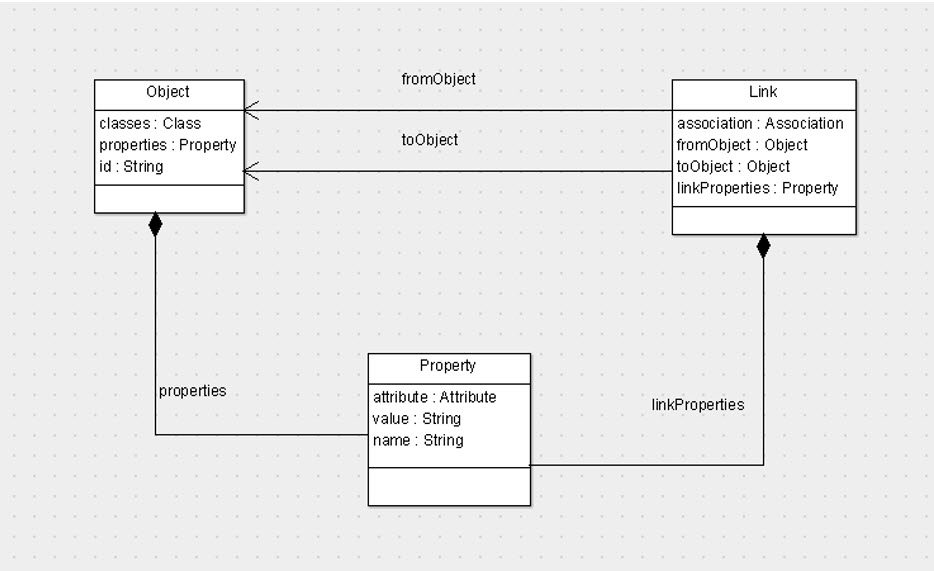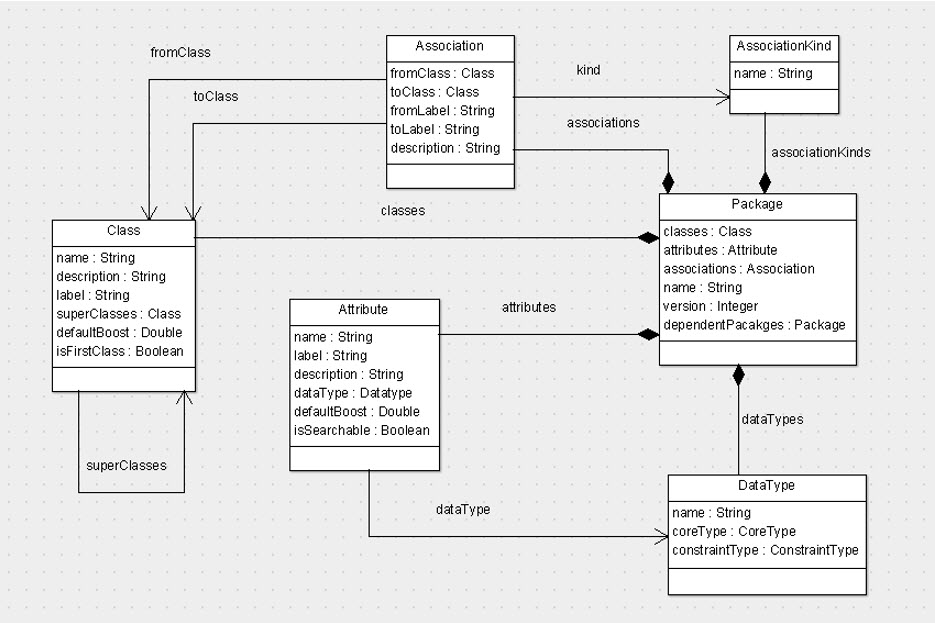Custom Metadata Integration Components and Configuration Options
When you create custom models for custom metadata integration, you configure the custom metadata that you want to ingest in the catalog. You can also configure options to search, filter, and sort the custom metadata ingested into the catalog.
Custom metadata integration includes the following components:
- Model
- A model represents the structure and properties defined for metadata ingested into the catalog. You must define the model as an XML file. Metadata ingested includes classes, associations, and attributes.
- The following image shows the structure of a model:
- System Models
- Models that Enterprise Information Catalog bundles by default to extract metadata from multiple data sources. You can export a system model XML file and update the file to create a custom model of your choice using Catalog Administrator.
- Custom Models
- Models that you define for extracting metadata from custom resources.
- Class
- A class defines the type of objects that a metadata source contains. Classes include associations and attributes.
- Object
- An object represents an entity about which you can store facts or attributes in the catalog.
- Attribute or Fact
- An attribute represents a single record of information provided by the source, in the catalog. An attribute describes the characteristics of an object.
- Association
- An association represents the relationship between two objects in the catalog.
- Association Kind
- An association kind represents the type of relationship or association between objects in the data source. For example, a parent-child inheritance relationship,
Note: You cannot define a new association kind in a model.
- Data Type
- A data type defines the types of values possible for an attribute. For example, string and integer.
The following image shows the relationship between objects, associations, and attributes:



